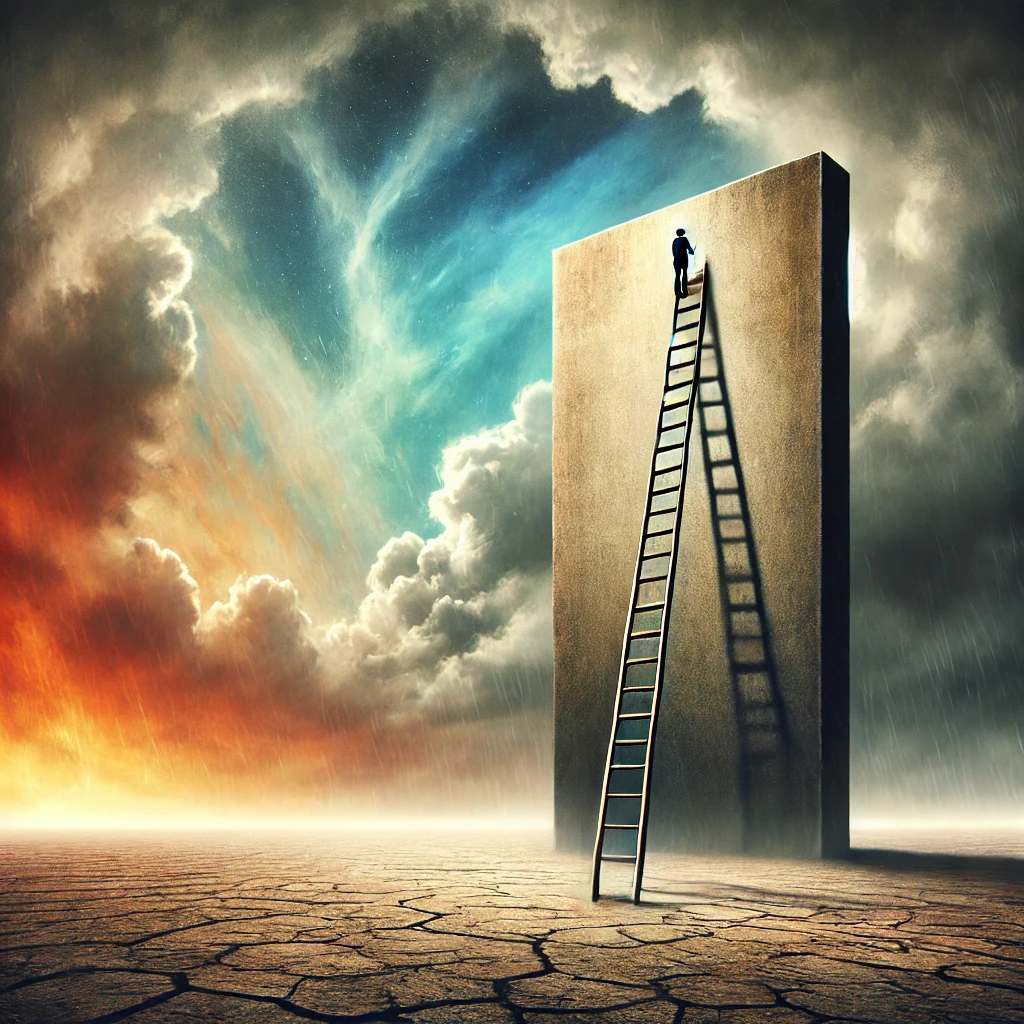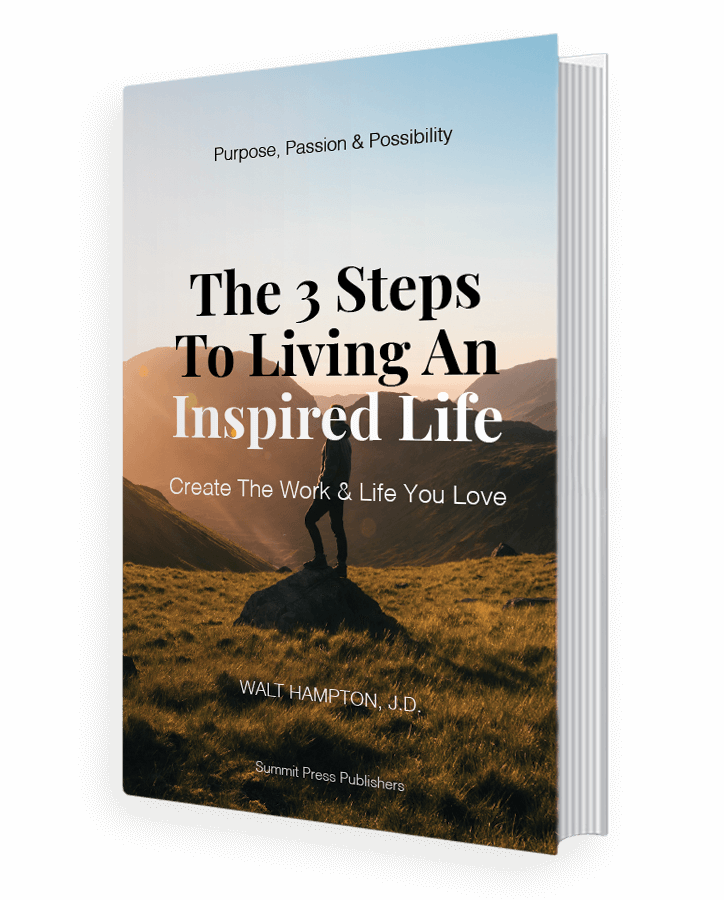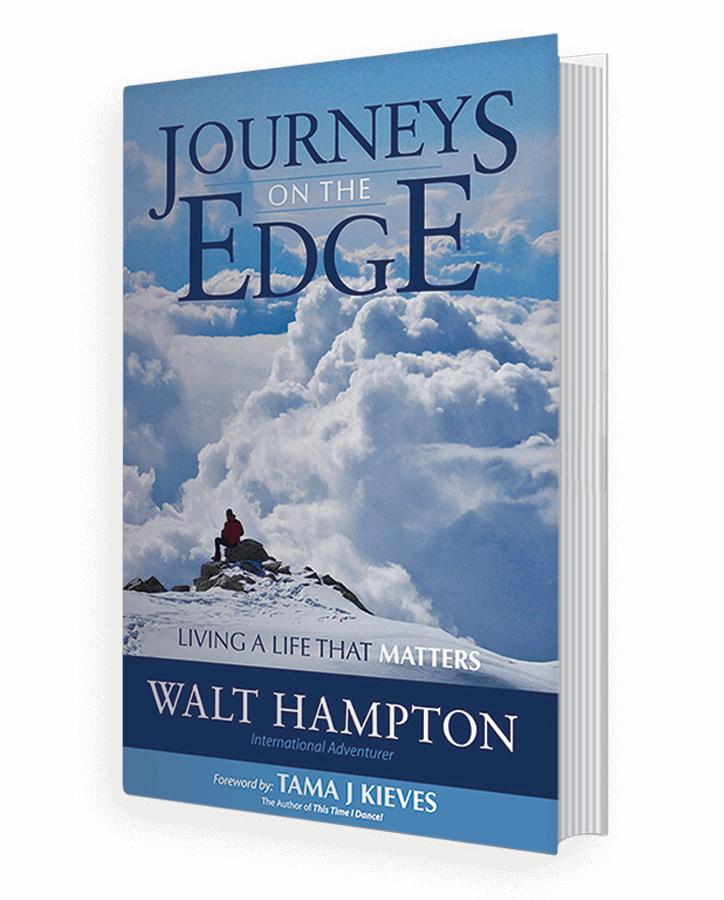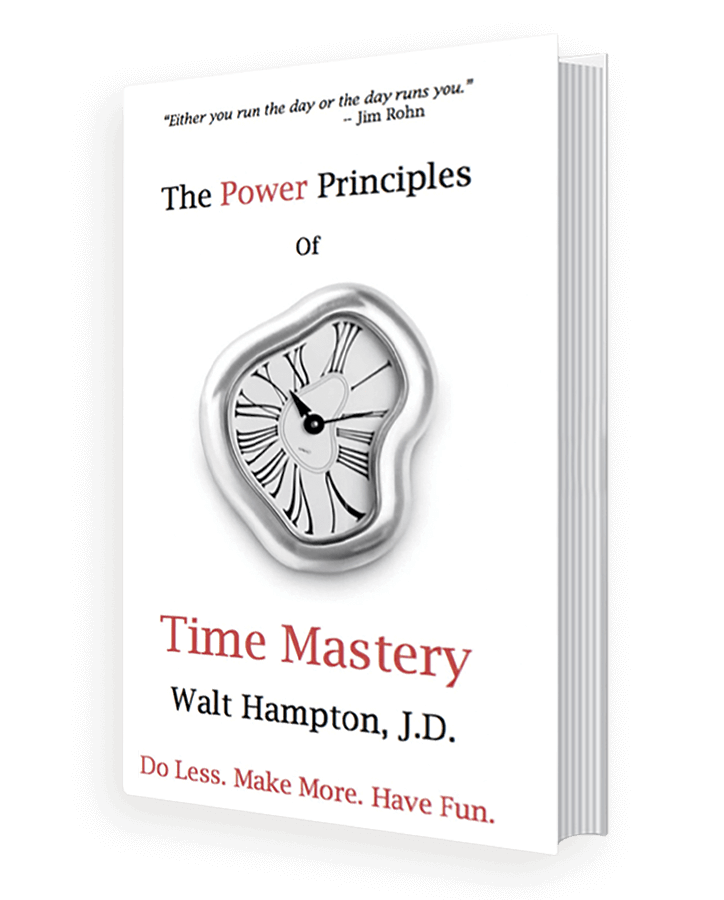Welcome to my blog
Grow & Scale A Business That Will Set You Free

How You Really Want It
The New Year is here. A fresh start. A blank page.
For many, this is the time for setting goals and planning.
And yes, of course, planning is important. Because, with a clear plan, you increase your odds of achieving your goals significantly.
But I have some important questions for you: Are the goals you’re chasing after the ones you really want? Are they the ones that make your heart sing?
In our success-driven hustle culture, we’re all surrounded by the call for more. Bigger. Better. Faster. 10xing everything.
And before you know it, you’ve lost your way.
“People may spend their whole lives climbing the ladder of success only to find, once they reach the top, that the ladder is leaning against the wrong wall,” Trappist monk and author Thomas Merton once said.

It’s a haunting image. A life full of effort and achievement. Only to realize it wasn’t your wall. It was someone else’s goal; someone else’s dream.
The world loves success stories.
But real success starts with this question: How do I want my life to be?
Not just your work life. Or your financial life. But your life.
This question shifts everything. It invites reflection. Alignment. Purpose.
So my invitation to you as we move into the New Year is this: Pause. Take a breath. Ask yourself:
- What truly matters to me?
- Who do I want to be?
- How do I want my days to feel?
This isn’t about rejecting ambition. It’s about clarity.
Goals are only worth pursuing if they lead to a life that feels whole.
Maybe this year isn’t about doing more.
Maybe it’s about doing what matters.
Take the time to choose your wall. Lean your ladder against something that feels solid. Something that aligns with your heart and soul.
Because a meaningful life isn’t about how high you climb.
It’s about where you’re climbing to.
This year, start with the right question. Build from there.
And may you find joy, peace, and purpose in every step.
May it be so.
____________________________________________
If you’d like help with your ladder, email me: [email protected]

Claiming It For You
Hope deferred makes the heart sick,
but a longing fulfilled is a tree of life.Proverbs 13:12
How are you today?
I hope you’ve woken up rested, refreshed and satisfied after your Christmas celebrations.
But if, instead, you’re feeling dazed and depleted and maybe a little bit empty, you are not alone.
The holidays are a huge source of stress; a seemingly never-ending torrent of buying and wrapping and eating and drinking and binging and networking and connecting and partying; with concomitant unceasing demands and obligations and expectations.
Likely you’ve spent the last several weeks hustling around fulfilling everyone else’s wants. Tending to the needs of others.
Maybe you think you’re done.
Except that you’re not.
It’s today. Another day. And while you can, perhaps, distract yourself for a little while longer, ringing in the New Year, the day is coming soon when you will face the expanse – or the abyss – of the year ahead.
So today’s question is not about all those other folks you’ve been attending to. It’s about you.
What do you want?
What do you really want?
Not what you think you should want; or what you think you’re expected to want. Not what your father wanted; or what you’re mother thought would be right. Not what your partner or boyfriend or girlfriend or neighbors want. Not what your clients want. Not what some well-intentioned teacher or guidance counselor wanted for you.
Rather, what is it you want ? For yourself? Right here? Right now?
The folks who read this blog are, by their very nature, givers. The challenge for givers is receiving. The challenge for givers is getting quiet enough to listen to the still small voice that speaks to us of our heart’s desires. The challenge for givers is giving to ourselves what it is we really, really want.
Because, we presume that what we want is bad. Or selfish. Or self-centered.
Or more frequently, we forget what we wanted. We become numb to our heart’s desire.
So on the threshold of a new year, I have a challenge for you: Set aside some time just for you; and spend some time asking yourself (and perhaps journaling about) these questions:
- If I could make my life any way I wanted it, what would my ‘perfect’ day look like? My ‘perfect’ week? What time would I get up? What would I wear? Who would I spend my time with? What work would I do? What projects would I pursue? What travels would I take? What would my ‘perfect’ life look like?
- If this were my very last year on earth, what would I do? Would I stay in the same relationship; would I keep the same job; would I hang out with the same people; would I go the same places; would I do things the way I’m doing them right now?
- If money were no object, if I won the $30 million dollar Powerball, what would I do? After I bought all the toys I wanted, where would I go; who would I go with; where would I spend my time; what experiences would I want to create; what legacy would I want to leave?

Because here’s what’s true: Those whispers that are in our hearts, those dreams that we have, those projects we want to create, those places we want to go, the empires we want to build, the impact we want to make… they’re not random musings; they’re not accidents. They are the call of our Spirit, the Divine within us, showing us – telling us – the way.
So think. Write. Draw. Free flow. Tear down the boundaries. No limitations. Let your imagination run wild.
And then get busy. Because, that’s what you want. That’s what you really want.
That’s your heart’s desire.
_________________________________________________
And if you need or want help connecting with your heart’s desire, email me: [email protected]

It Is The Turning Point
“Change today?” the beggar asked.
There was a touch of anger. Some sarcasm. A bit of sadness too.
My son glanced up at me sideways. “So now you want to be a father?” I’d been endeavoring to share some hard-earned, had-fought, hard-edged wisdom. The conversation had been difficult. The topic unpopular. The message unwelcome.
A long silence.
“Now you want to be a father?” he asked again. (Indeed, I haven’t always been the best dad I could be.)
“Yes, now,” I said. “I get to change and grow too, you know.”
That’s the beautiful part: we do.
We’re not caught. We don’t have to stay the same, be the same, do the same things, go the same places, have the same job, get stuck in the same relationships, be the same weight, have the same level of fitness, make the same amount of money, have the same outlook on our life. We can mix it up, turn it upside down, play it sideways. All out. Or not at all.
We get to choose. We get to change.
It is easy to feel stuck, to get stuck. All of us have been there. We get overwhelmed by the circumstances of our lives: by the financial pressures we feel, by the demands of our jobs, by the expectations of our clients and customers, by our responsibilities to our children and significant others and loved ones. We travel down long rabbit holes into careers that we are good at but that are unfulfilling, that fail to nurture and satisfy us at the deepest levels. We find ourselves in relationships that once fed us but now, perhaps only through the ebb of time, slowly poison. We wake up overweight and out of shape with cholesterol that’s too high and estrogen that’s too low and blood pressure that’s elevated and a sex drive that’s not. It feels too complex to untangle the tangled web; too difficult to overcome the status quo. The maze is too complicated and the cheese is nowhere to be found.
Can we get out? How do we get out?
Ann describes her father’s later years: disillusioned, he moved away; caught in cycles of hopelessness and isolation, he self-medicated with alcohol; and died alone. He couldn’t believe that his world could be different.
The worlds we create can always be different.
We get to choose. We get to change.
Sometimes we need encouragement. Sometimes we need coaching or professional help. Sometimes we need patience. Sometimes we need a kick in the butt. But the door is always open. It is our birthright to continually transform our lives, ourselves.
We in the Northern climes celebrate the winter solstice this week. The shortest day and the longest night. Light will triumph over darkness once again.
The seasons change. And so do we.
Years ago, renowned saxophonist Paul Winter composed a haunting instrumental piece as a hallmark of his magnificent winter solstice celebration: The Turning Point Suite.
Each moment in our lives is an opportunity, a turning point. Sweet.
Change today? Yes, today.

See, I am doing a new thing! Now it springs up; do you not perceive it? I am making a way in the desert and streams in the wasteland.
— Isaiah 43:19

That Giant Flushing Sound
It’s December, and you’re being pulled into the vortex of time. The maelstrom is all around you! Can you feel it?
After Halloween, the year just seems to accelerate. After Thanksgiving, the days move forward at warp speed. The commitments and the demands and the lists and the expectations and the projects that need to be done – have to get done – before the end of the year seem to mount logarithmically. And then there are the card lists and the gift lists and the shopping and the school concerts and the holiday parties….
In many professions, there are the added pressures of pulling in the receivables and closing the deals by year’s end.
What to do?
Wrong question.
The question is what not to do.
The way out of the vortex – the only way – is the simplest and the hardest thing of all. The only way out is to say “no.”
Saying “no” is not news and it’s not rocket science. All of the leadership and success books will tell you that it is fundamental to your sanity and, paradoxically, a key to your productivity and goal achievement.
Jack Canfield in his book The Success Principles recommends creating a “stop-doing” or “don’t do” list. (My favorite list!)
I invited a colleague to a program I was hosting. Her response: “Thank you. But I ‘don’t do’ evening commitments.” (Those are pretty clear boundaries, I thought!)
But, why is saying “no” so hard?
Well, most of us are conditioned from very early on that “no” is not the “right” answer. As time goes on, you also begin to layer on your own assumptions – whether true or not – about what others expect of you.
Sometimes, I suspect, saying “yes” is just a habit. (I said yes to a commitment recently without even stopping to realize I would be out of the country during the time I’d committed!)
And yes, isn’t there a healthy dose of narcissistic self-importance that loves to believe that somehow your presence is essential or that you are the only one who can do something?
So as the vortex swirls, I’m working on saying “no” more often.
I’ve started by asking myself whether a project or an invitation is one that I “should” do or accept rather than one I “want” to do or accept. I’m working at eliminating the “shoulds.”
(Note to self: Just because you can doesn’t mean you should.)
Saying no to the non-essential allows you to be more fully present in what is most important. By doing less, you can pay closer attention to what is essential. And as The Little Prince reminds us, “what is essential is invisible to the eye.” It takes time to see.
The Carmelite monk William McNamara writes, “We are not really practical, and we shall get nowhere, we shall never find life, life will escape us, unless we learn not to always be bustling about – unless we learn to be still, to let things happen around us, to wait, listen, receive, contemplate.”

“One final word on the subject of time,” McNamara says:
“I suggest that we stop doing half the work that presently consumes us. Then let us attend to the remaining half wholeheartedly, with contemplative vision and creative love. I stake the authenticity of our lives and the effectiveness of our work on this radical shift.”
I described the vortex to a colleague as a giant flushing toilet bowl.
Not a great place to end up.

Not Too Late
Nobody grasped you by the shoulder while there was still time. Now the clay of which you were shaped has dried and hardened, and naught in you will ever awaken the sleeping musician, the poet, the astronomer that possibly inhabited you in the beginning.
— Antoine de Saint-Exupery
No quote has troubled me more over the years than this one from Saint-Exupery’s Wind, Sand and Stars. Its clear message is that the passage of time eclipses the deepest yearnings of our hearts.
I think Saint-Exupery is wrong. I think we always yearn. I think our dreams always burn within us. The problem is that we don’t act.
My mentor, Galen Rowell, once wrote, “One of the most shocking realizations of adult life is that most of us are not fulfilling the closest-held dreams of our youth. Instead of pursuing dreams that were once integral parts of our personalities, we end up in one way or another fulfilling someone else’s idea about who and what we should be, usually at the expense of our creative urges.”
It is this realization that discourages, that breeds bitterness. It is this realization that dulls the spirit, that frustrates the soul.
But this realization that we are off course need not harden; it can be harnessed; it can propel us to fulfill what we know to be our heart’s deepest desire. With Wisdom, we can use it to drive us forward.
Time is a thief. But it need not steal those hopes and aspirations that form the core of who we were always meant to be. Our dreams define us. It is our essential Purpose to achieve them.
One of the most common themes I hear after talks I give on holding fast to dreams is this: I’m too old; it’s too late.
That’s bullshit.
Too Old, Too Late is a story told to mask fear, to hide insecurity, to explain resistance, and to excuse inaction.
History is replete with geniuses and giants in business, industry, art, entertainment, and athletics who were not “young” when they started out, whose talents and passions were ignited and came to fruition over the long arc of their lives. Here are but a few examples: Beverly Sills who eked out a singing career until age 40 when she became an operatic star; Colonel Sanders who founded Kentucky Fried Chicken in his 60s; Charles Darwin who toiled with his research and didn’t publish his first book on evolution until age 50; David Oreck who didn’t get started in his now world-famous business until he was 40; Grandma Moses who painted in her 70s; Julia Child who did not appear on television until she was 50; Rodney Dangerfield who only finally made it as a comic in his 40s; Bahadur Sherchan who holds the record as the oldest man to climb Mt. Everest at age 77; and Sister Madonna Budner who competed an Ironman triathlons at age 81.
There will always be other priorities, other responsibilities, and other things that “require” our attention. We are endlessly capable of explaining to ourselves why now is not the “right” time to listen to the still small voice that calls to us in the night, that echoes in the recesses of our hearts.
But what do we tell ourselves at the end of our lives?
How old will you be if you don’t start now?
Our resolves may flag. Our spirits may falter. But the clay of our lives does not harden. It is always ours to form.
Always.
Dreams deferred are dreams denied. Do what you’ve always dreamed of doing.
Do it now.
p.s. I help people at a crossroads figure out what’s next. Email me and we can connect for a call: [email protected]

DOWNLOAD your FREE BOOK!

DOWNLOAD Your Free E-Book NOW! Click Below And Get Going!
Click below for your copy of Journeys!

You’ll Get A Signed Copy!
Click on the button for your copy of my brand new book “The power principles of time mastery!”

You’ll Get A Signed Copy!
Categories
Adventure
Finding The Way
Journeys
Leadership
Success
Ultra Training
